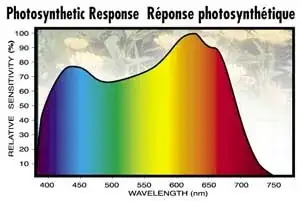I see a 20,000k (color temperature) 12 watt LED E27 bulb designed for coral, aquariums and such. 7000k is supposed to be full-spectrum light, I hear. So, I imagine a 20,000k would be even more full-spectrum.
I realize 12 watts isn't going to be as powerful as sunlight.
Anyway, how effective is this going to be as a grow light for vegetables compared to blue and red LED 12 watt grow lights? Will it have infrared and UV rays?
Here's a link to the product if you're curious. (select the 20,000k option)
They also have a 10,000k bulb.
Since they're marketed for helping coral to grow, I imagine there's more to it than merely giving the appearance of 20,000k light, but I could be wrong.
EDIT: I ordered one bulb, and a blue one from the same seller. So, I guess I'll be able to answer this question within a month or two (granted there's no red in the light to compare in that regard).

